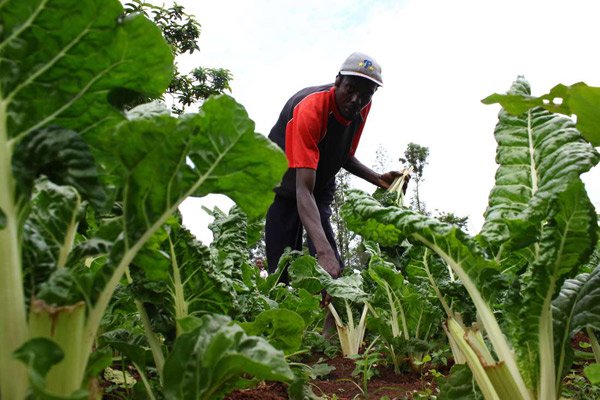Ford Hook Giant is the best variety as it can do well in a wide range of environmental conditions and is also the most common variety of Swiss Chard in Kenya. Other varieties include King of Denmark, New Zealand, Bloomsdale Long Standing, Giant Noble and Early Hybrid No. 7.
Swiss Chard requires fertile soils and will do well when supplied with nitrogen. It requires a regular supply of water throughout the entire growing period.
Swiss Chard can be established directly or can be started first in a nursery bed then transplanted. If directly seeded, the rows are spaced 30cm apart and the seeds are then drilled in the rows and later thinned to a spacing of 10cm between the seedlings
i) Clear the land to remove all weeds.
ii) Measure 1m width and any length depending on the number of seedlings required.
iii) Prepare the land to a fine tilth.
iv) Level the nursery bed using a rake.
v) Make furrows which are about 2cm deep and 10cm apart.
vi) Apply well-rotten manure in the furrows and mix it thoroughly with the soil before placing the seeds. It is advisable to soak the seeds for 24 hours to enhance germination.
vii) Place the seeds in the furrows and cover lightly with soil.
viii) Apply mulch on top of the nursery bed and water the nursery bed.
ix) Keep watering the nursery bed.
x) The mulch should be removed as soon as the seedlings start to emerge.
The seedlings are ready for transplanting a month after planting. Two weeks before transplanting, hardening off should be done (gradual removal of shade and reduction of watering so that the seedlings can adapt to the ecological conditions prevailing in the seedbed).
Transplanting should be done late in the evening or on a cloudy day.
Water the nursery bed thoroughly before lifting the seedlings so that they come out with a ball of soil around the roots.
Transplant to the seedbed in rows spaced 30cm apart and 10cm between the seedlings. Water the seedlings after transplanting.
Hand weeding is recommended. Diseases and pests are manifested by discolourations on the leaves or the presence of holes on the leaves.
Use the recommended fungicides or pesticides to control diseases and pests. Practice crop rotation.
Spinach farming in Kenya: Harvesting
Older leaves are harvested first when the plants have about eight leaves.
Carol Mutua,
Department of Crops, Horticulture and Soils, Egerton University.
source: Daily Nation
Did you love the story? You can also share YOUR story and get it published on Bizna Click here to get started.





There’s nothing here on how to make money, despite fhe article titled saying so.